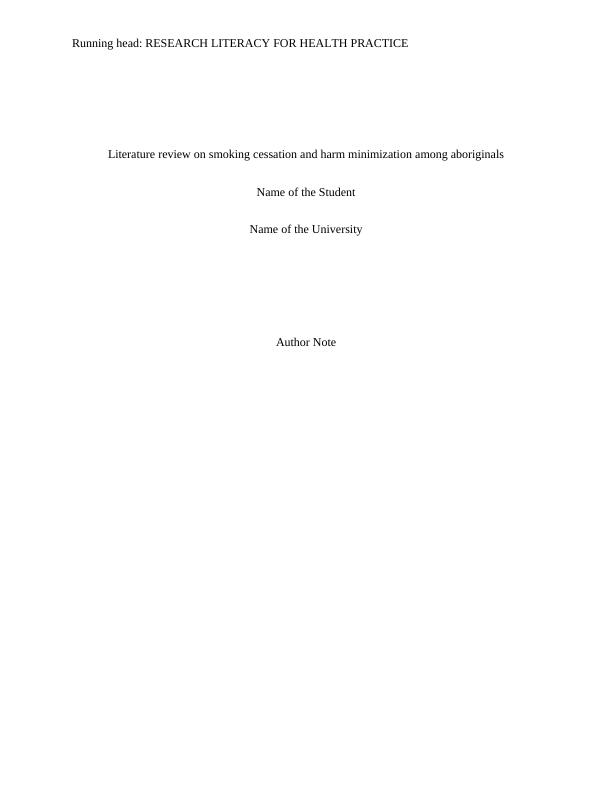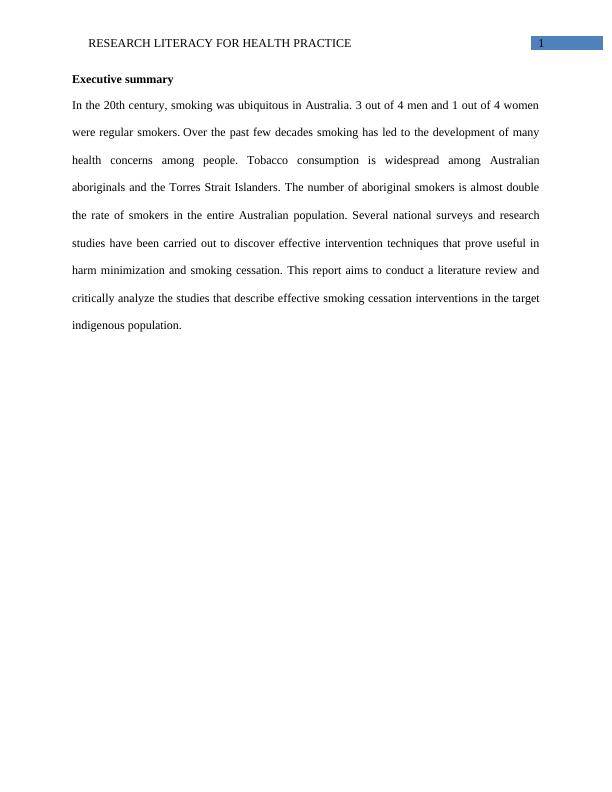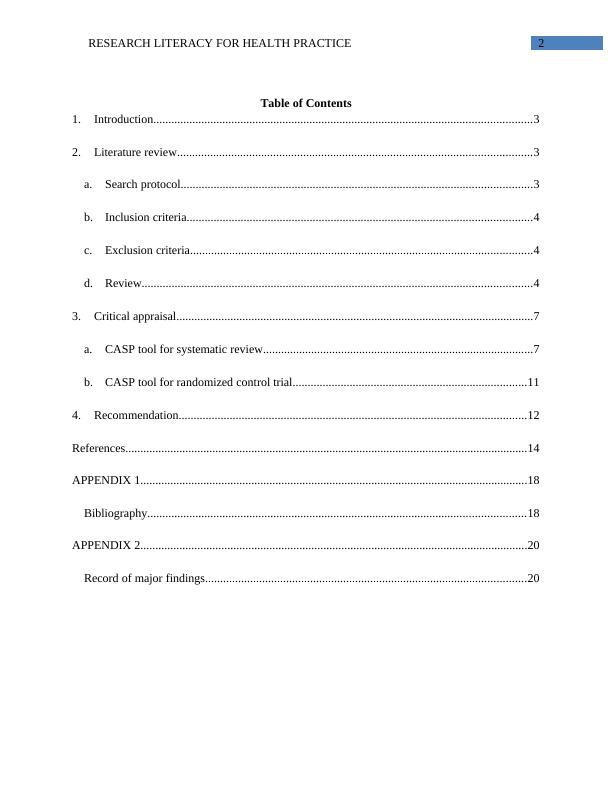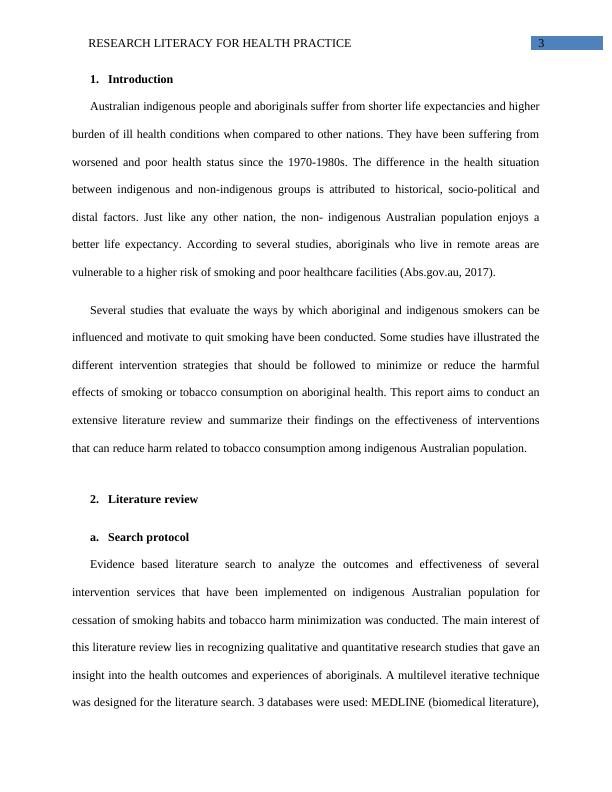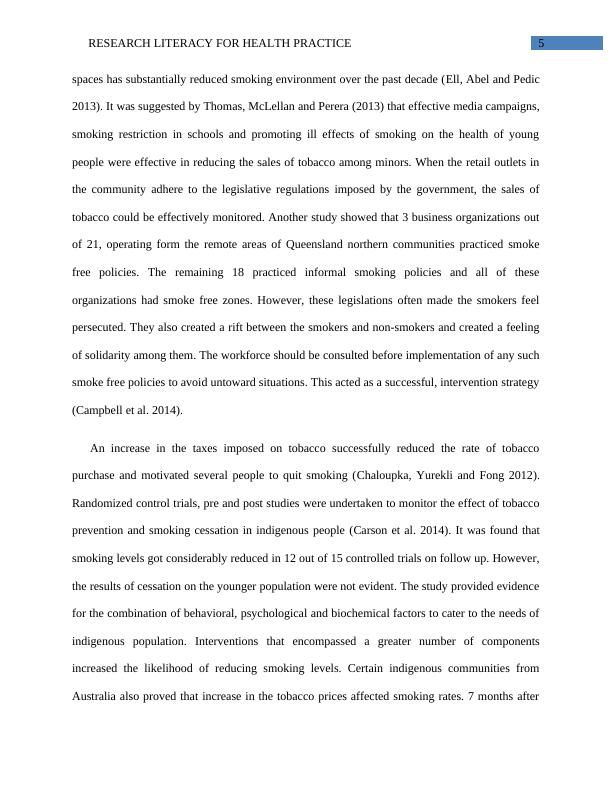RESEARCH LITERACY FOR HEALTH PRACTICE 22 RESEARCH LITERACY FOR HEALTH PRACTICE Smoking cessation and harm minimization among aboriginals Name of the University Author Name
21 Pages4931 Words124 Views
Added on 2020-03-23
About This Document
This report aims to conduct a literature review and critically analyze the studies that describe effective smoking cessation interventions in the target indigenous population. This report aims to conduct an extensive literature review and summarize their findings on the effectiveness of interventions that can reduce harm related to tobacco consumption among indigenous Australian population. Literature review Search protocol Evidence based literature search to analyze the outcomes and effectiveness of several intervention services that have been implemented on indigenous Australian population for cessation of smoking habits and tobacco harm minimization was conducted.
RESEARCH LITERACY FOR HEALTH PRACTICE 22 RESEARCH LITERACY FOR HEALTH PRACTICE Smoking cessation and harm minimization among aboriginals Name of the University Author Name
Added on 2020-03-23
ShareRelated Documents
End of preview
Want to access all the pages? Upload your documents or become a member.
Research Literacy for Health Practice: Assignment
|7
|1670
|33
HSH725 : Research Literacy for Health Practice
|15
|3669
|160
Research Literacy for Health Practice
|12
|4031
|175
Health Promotion: Assessment
|14
|3998
|91
Health Promotion Assignment
|9
|2227
|216
Chronic Obstructive Pulmonary Disease Research
|5
|923
|234

